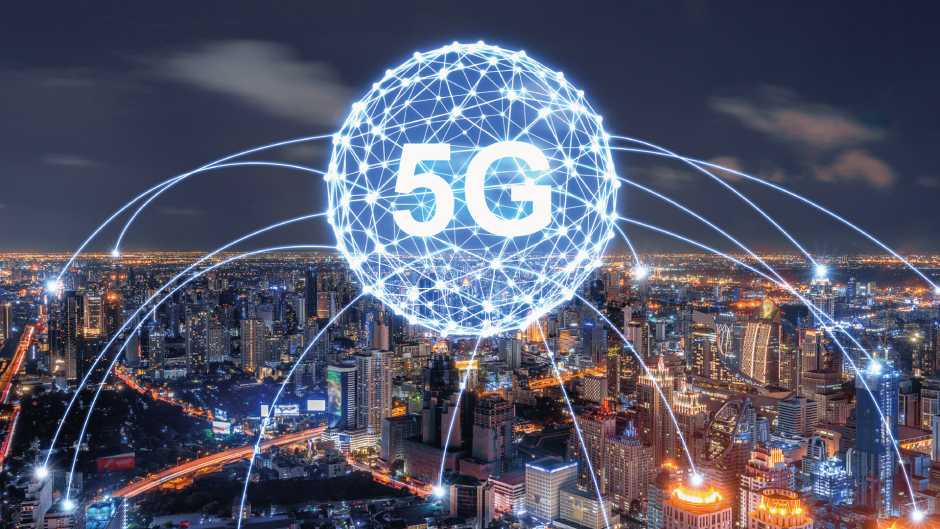Federal Minister for Information Technology and Telecom Syed Amin-Ul-Haque announced to launch of 5G services in Pakistan by July 2023. The minister announced it while addressing the participants of Career Feast 2022, an event held by the University of Karachi’s Department of Computer Science on Thursday.
It is the fresh date announced by the minister to roll out the 5G technology in Pakistan as he, last year, announced to launch it in December 2022. He emphasized developing a strong connection between universities and IT industries as it will help catering the future needs of the country.
“We are making efforts to ensure accessibility of technology to people in every nook and hook of the country,” he said. The minister highlighted that the IT ministry registered the highest export growth of 47.44% as compared to other ministries, which recorded only a 2-3% growth in exports.
Saying $373 million were set aside for startups in 2020, Haque said that the government aimed to take it to $500 million. “The IT exports stood at $1.4 billion when I assumed charge and now they have surged to $2.6 billion,” he said.
An Ericsson-commissioned study by management consultancy Analytics Mason has highlighted the potential economic, consumer, and environmental benefits of 5G connectivity in 15 national emerging markets, including Pakistan.
With regulatory and government support, all 15 countries could benefit from GDP growth of between 0.3% and 0.46% by 2035, an estimated three to seven times the cost-to-benefit ratio, titled ‘The Future Value of Mobile’ According to the study in emerging markets.
Apart from Pakistan, the countries covered in the research report are Bangladesh, Brazil, Chile, Colombia, Egypt, India, Indonesia, Malaysia, Mexico, Morocco, Nigeria, South Africa, Thailand, and Turkey.
Pakistan is already pushing for rapid implementation of 5G technology in the country. In August, Syed Aminul Haq, the federal minister for IT and telecommunications, said the technology would be rolled out ahead of elections next year.
Meanwhile, the study examines the impact of multiple 5G spectrum deployment options to facilitate advanced mobile broadband and fixed wireless access (FWA) across consumer, industry, logistics, rural, and public service groups, and explores multiple business case options, including vertical spreads.
“This Analysys Mason Future Value of Mobile in Emerging Markets report provides a detailed breakdown, based on extensive research, of the potential economic, social, environmental, and national benefits of 5G in these markets into realistic and achievable scenarios in each of the 15 countries Is.” Andrew Lloyd, Head of Government and Policy Advocacy, Ericsson, was quoted as saying in a press release.
With the support of governments, regulators, and policymakers, each of these 15 countries and their citizens stands to benefit significantly from 5G connectivity. In addition to economic benefits, 5G can reduce climate impact, enhance social inclusion, and well-being and tackle the digital divide in regions where fixed infrastructure is poorly available.
The study’s detailed methodology includes the use of national government data and reports, Ericsson network insights, and innovative mapping techniques including population density distribution and existing national infrastructure such as road and rail networks, and agriculture to create a cost-benefit analysis of various models in the deployment options.
The deployment options are based on the initial assumption that the 5G baseline rollout will be added to existing mobile radio network sites. Additional options explore the additional benefits of adding low-band 5G spectrum coverage beyond the baseline (providing broad geographic coverage at the low end of 5G capabilities and suitable for agricultural or logistics deployments) or mid-band 5G spectrum coverage Per provide less geographic coverage. the site, but with high capacity and speed, suitable for manufacturing, automation, industry, and advanced services.
Expanded mid-band 5G coverage is recognized as a key success factor – with the potential to deliver around 80 percent of the economic benefits. Smart industries and smart village clusters account for 85-90% of total economic gains in each emerging market.
Agriculture is an important sector in all 15 countries accounting for up to 10% of GDP in some markets. The report estimates that increasing rural 5G coverage could increase long-term GDP from agriculture by up to 1.8%, the report said. 5G will also promote sustainable farming methods, increase efficiency and reduce agricultural waste.
“The study highlights the benefits of having the right spectrum available for 5G deployment, both in the geographic coverage for which the low-bands are best suited and in the 3.5GHz band where there are high-capacity 5G deployments in other markets. Already happening,” said Janet Stewart, Partner, Analysys Mason.
The baseline 5G deployment cost is estimated between USD 3-8 billion per country. An additional 20-35% investment is required to increase coverage. Expansion of coverage beyond baseline can generate significant GDP benefits from industrial adoption, especially from mid-band coverage expansion
Most countries are expected to generate three to seven times the overall economic benefit (GDP) than the incremental cost of expanding coverage. Results suggest that 5G mobile broadband could generate a consumer surplus of between USD 1-10 billion per country, with coverage expansion providing an additional 20-30 percent consumer surplus.
The social benefits enabled by 5G will be greatest from use cases in 5G-based FWA, smart factories, freight and logistics, agriculture, and healthcare.5G adoption can help reduce emissions by supporting digital transformation in agriculture, freight and logistics, smart factories, and construction.
The study highlights how governments, regulators, and policymakers can support the 5G ecosystem to deliver benefits. These include treating 5G as a national infrastructure with a 5G National Strategy and Roadmap, and implementing 5G spectrum policies that facilitate rapid and widespread deployment, with deployment targets meeting connectivity policy objectives. Easy to trade spectrum fees, and implement policies and procedures for infrastructure deployment and site upgrades.
In addition, work with communication service providers to increase coverage in areas where commercially operated solutions are not viable, encourage 5G usage and adoption in industry and manufacturing, promote 5G in the public sector, and Promote the environmental benefits of the solutions may also benefit. 5G segment in 15 countries.
On the occasion, Marc Lefkowitz, Director of YouTube Partner Development and Management Asia-Pacific (APAC), said that there are over 5,400 YouTube channels in Pakistan whose subscriber count exceeded 100,000. “Pakistan is one of the fastest growing markets in the APAC region,” he stressed.“The number of YouTube channels in the country grew 35% over last year.”
According to him, over 350 of these channels had more than a million subscribers. The platform intends to continue to extend its support to Pakistani content creators so they can pursue their passions and responsibly build careers, Lefkowitz said.
As of June 2021, the number of Youtube Channels making Rs 1 million or more in revenue was up over 110% on a year-on-year basis.
Read More:












